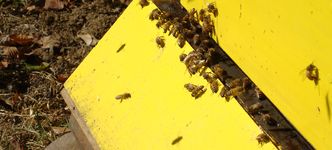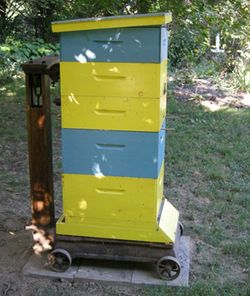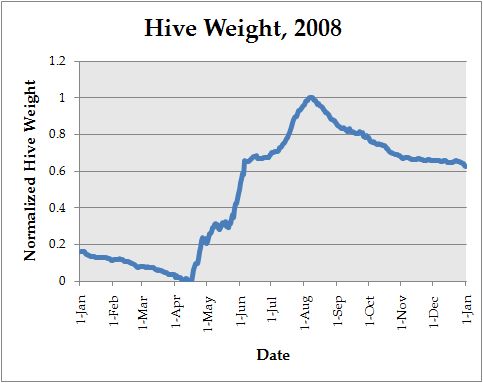|
|||||||||
IntroductionAs a hobbyist beekeeper, my husband I keep between four to six hives at our home in Shippensburg. In addition to providing us with a source of honey and beeswax, and providing our neighbors with a pollinating work force, honeybees can tell scientists important information about the ecosystem. NASA recently began a project called HoneyBeeNet to study plant-pollinator interactions and to see how these interactions might be affected by climate change. How HoneyBeeNet Works
HoneyBeeNet relies on data collection by local beekeepers all across the United States. (Our hives were the first in Pennsylvania to be included in HoneyBeeNet.) Each beekeeper has at least one hive on a scale and records the hive weight every day. The hive weight is essentially an indicator of when nectar sources are available, and can be used to track plant-pollinator interactions throughout the growing season. For example, as soon as a significant nectar source is available in the Spring, the hive weight increases rapidly. In the Spring, bees can collect enough nectar in a single day to cause an increase of more than 10 pounds!
The weight of our hive during 2008. Note the rapid increase in weight that occurs in mid-April, the summer "dearth" that occurs in June, and the "Fall flow" that occurs in late July and August. The hive weights and the locations of the hives can be used in conjunction with satellite imagery, which can be used to describe the landscape surrounding the hives. when tracked over time, these two variables can describe how plant-pollinator relationships change in response to local factors like land cover change (e.g. urbanization) and broader scale factors like climate change. What Do We Do with Our Honey?Each year, our hives produce about 200 pounds (about 15 gallons) of honey. We harvest the honey in the Fall, leaving the bees enough stores for the winter. Our honey is raw honey, which means it is not pasteurized or blended; the only thing we do is filter out the wax. We sell our extra honey and hive products at Shippensburg's Winter Expo, a craft show and sale usually held in November, and sponsored by SU's Women's Consortium. The Winter Expo raises money for the Women's Consortium Emergency Fund and the Women in Need domestic violence service center in Chambersburg, PA. Since 90-95% of the bees in a hive are female, including all of the worker bees, I consider this to be a great example of "women helping women."
|
|||||||||
|
|||||||||


